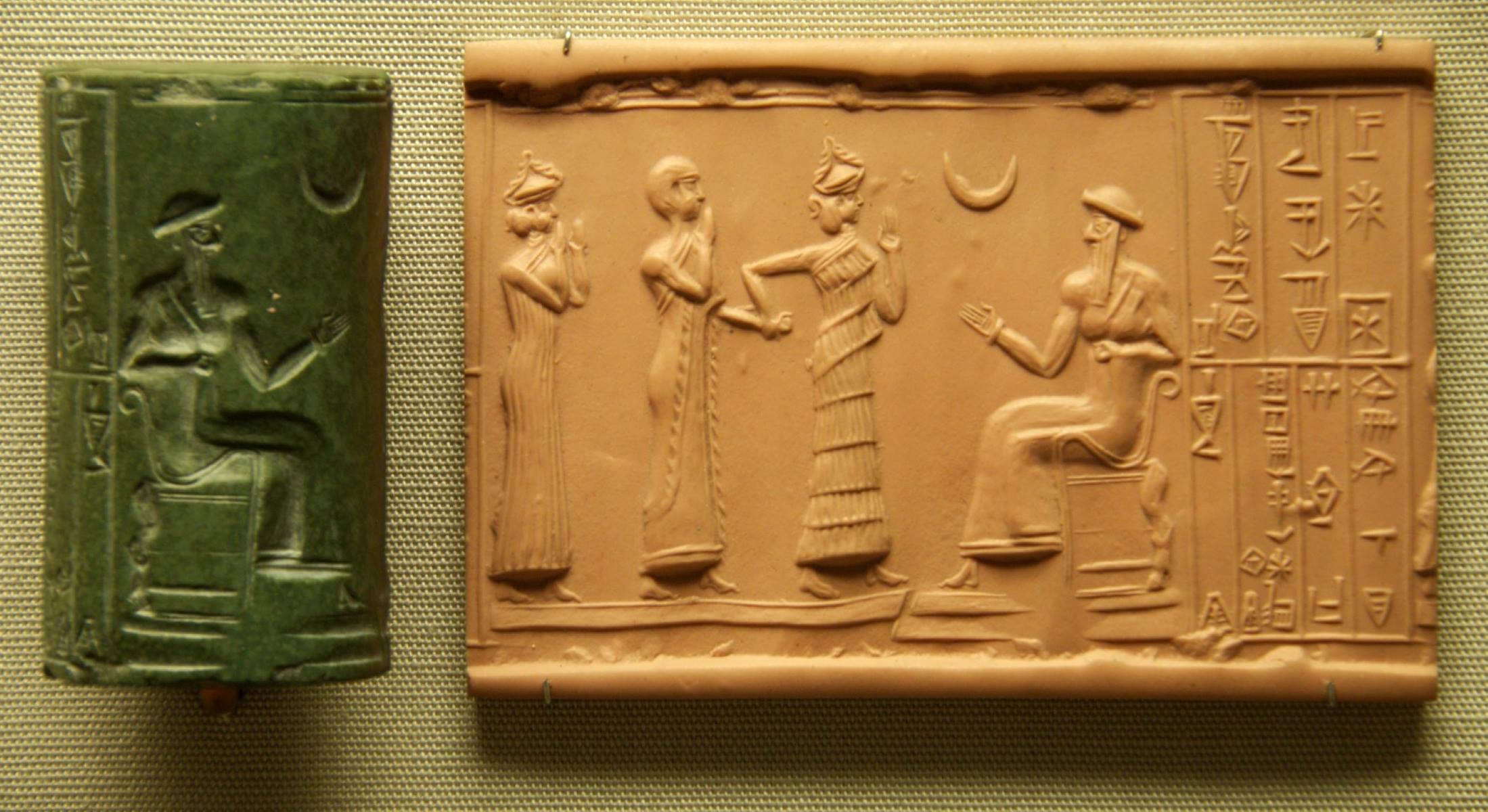
Puzur-Sin's Uprising stands as a significant chapter in the ancient history of Mari, a city nestled in the Euphrates River valley, now modern-day Syria. Around 2400 BCE, Puzur-Sin, a high-ranking official, led a rebellion that shook the city's foundations. This event wasn't just a mere power struggle; it was a complex mix of economic hardship, political instability, and personal grievances. The uprising saw fierce battles, strategic sieges, and even the involvement of mercenaries. The temple, a central power hub, played a crucial role. This conflict left a lasting impact on Mari's trade, culture, and political landscape.
The Historical Context of Mari
Mari, an ancient city in the Euphrates River valley, played a crucial role in the Early Dynastic Period of Sumeria. Its strategic location made it a hub for trade and commerce.
- Historical Context: Mari was a major city in the ancient Near East during the Early Dynastic Period of Sumeria. It was known for its strategic location and its role as a center of trade and commerce.
Who Was Puzur-Sin?
Puzur-Sin, a high-ranking official in Mari, led the uprising. His exact position remains unclear, but he was likely part of the royal family or a powerful noble.
- Puzur-Sin: The uprising was led by Puzur-Sin, who was a high-ranking official in the city of Mari. His exact position is not clearly documented, but he is believed to have been a member of the royal family or a powerful noble.
Causes Behind the Uprising
The reasons for Puzur-Sin's Uprising are not well-documented. However, a mix of economic hardship, political instability, and personal grievances likely played a role.
- Causes of the Uprising: The exact causes of Puzur-Sin's Uprising are not well-documented, but it is believed to have been sparked by a combination of factors including economic hardship, political instability, and possibly even personal grievances.
Leadership and Support
Puzur-Sin wasn't alone in his rebellion. He had the support of other nobles and possibly some commoners who were unhappy with the current state of affairs.
- Leadership: Puzur-Sin was not alone in his rebellion. He was joined by other members of the nobility and possibly even some commoners who were dissatisfied with the current state of affairs in Mari.
Military Campaigns and Tactics
The uprising involved several military campaigns aimed at overthrowing Mari's existing power structure. Puzur-Sin and his followers likely used guerrilla tactics and other forms of warfare.
- Military Campaigns: The uprising involved a series of military campaigns aimed at overthrowing the existing power structure in Mari. Puzur-Sin and his followers likely used guerrilla tactics and other forms of warfare to gain control over key areas of the city.
Opposition and Conflict
The existing rulers of Mari, likely members of the royal family or other powerful nobles, opposed Puzur-Sin's uprising. This led to intense and prolonged conflict.
- Opposition Forces: The existing rulers of Mari, who were likely members of the royal family or other powerful nobles, opposed Puzur-Sin's uprising. These forces were likely well-armed and well-trained, making the conflict intense and prolonged.
The Battle Within the City
The most significant battle of the uprising took place within Mari itself. Puzur-Sin and his followers fought fiercely against the opposing forces.
- Battle of the City: The most significant battle of the uprising took place within the city itself. Puzur-Sin and his followers fought against the opposing forces in a series of fierce battles, with both sides suffering heavy casualties.
Siege Tactics and Strategies
Both sides used siege tactics to capture key fortifications and strategic locations within Mari. Puzur-Sin's forces likely employed catapults, battering rams, and other siege engines.
- Siege Tactics: The conflict involved siege tactics, with both sides attempting to capture key fortifications and strategic locations within the city. Puzur-Sin's forces likely used catapults, battering rams, and other siege engines to breach the defenses of the city.
The Role of Mercenaries
Evidence suggests that Puzur-Sin's forces may have included mercenaries from neighboring regions, bringing valuable military skills and experience to the conflict.
- Use of Mercenaries: There is evidence to suggest that Puzur-Sin's forces may have included mercenaries from neighboring regions. These mercenaries would have brought valuable military skills and experience to the conflict.
The Temple's Influence
The temple in Mari, often a center of power and influence, may have played a significant role in the uprising. Puzur-Sin and his followers might have sought to capture it for its resources.
- Role of the Temple: The temple of the city, which was often a center of power and influence, may have played a significant role in the uprising. Puzur-Sin and his followers might have sought to capture the temple and use its resources to their advantage.
Economic Factors at Play
Economic issues such as trade disruptions and food shortages could have contributed to the instability leading to the uprising. Puzur-Sin may have exploited these grievances to gain support.
- Economic Factors: Economic factors such as trade disruptions and food shortages could have contributed to the instability that led to the uprising. Puzur-Sin and his followers may have exploited these economic grievances to mobilize support.
Political Alliances and Rivalries
The uprising likely involved complex political alliances and rivalries within Mari's nobility. Puzur-Sin may have formed alliances with other dissatisfied nobles.
- Political Alliances: The uprising likely involved complex political alliances and rivalries within the nobility of Mari. Puzur-Sin may have formed alliances with other nobles who were dissatisfied with the current rulers.
Cultural Impact of the Uprising
The uprising had significant cultural impacts on Mari, leading to changes in the social hierarchy, the role of the temple, and the exercise of power within the city.
- Cultural Impact: The uprising had significant cultural impacts on Mari. It led to changes in the social hierarchy, the role of the temple, and the way power was exercised within the city.
Archaeological Evidence
Archaeological evidence from Mari provides insights into the conflict. Excavations have uncovered signs of destruction and rebuilding, indicating significant damage during the uprising.
- Archaeological Evidence: Archaeological evidence from the site of Mari provides insights into the conflict. Excavations have uncovered evidence of destruction and rebuilding, suggesting that the city was significantly damaged during the uprising.
Sparse Historical Records
Historical records from the time are sparse but offer some clues about the events leading up to and during the uprising. These records often focus on political and military aspects.
- Historical Records: The historical records of the time are sparse, but they provide some clues about the events leading up to and during the uprising. These records often focus on the political and military aspects of the conflict.
Legacy of Puzur-Sin
After the uprising, Puzur-Sin became a significant figure in Mari's history. He may have established a new dynasty or at least significantly altered the city's power structure.
- Legacy of Puzur-Sin: After the uprising, Puzur-Sin became a significant figure in Mari's history. He may have established a new dynasty or at least significantly altered the power structure of the city.
Reconstruction Efforts
Following the conflict, extensive reconstruction efforts likely took place to rebuild Mari and restore order. This period saw significant architectural and cultural developments.
- Reconstruction Efforts: Following the conflict, there were likely extensive reconstruction efforts aimed at rebuilding the city and restoring order. This period saw significant architectural and cultural developments.
Impact on Trade
The uprising significantly impacted trade in the region. Disruption of trade routes and instability in Mari affected neighboring cities and regions.
- Impact on Trade: The uprising had a significant impact on trade in the region. The disruption of trade routes and the instability in Mari would have affected neighboring cities and regions.
Role of Foreign Powers
Foreign powers such as the Akkadians or other neighboring city-states may have played a role in the conflict, providing support to either side or intervening directly to stabilize the region.
- Role of Foreign Powers: Foreign powers such as the Akkadians or other neighboring city-states may have played a role in the conflict. They could have provided support to either side or intervened directly to stabilize the region.
Historical Significance
Puzur-Sin's Uprising is significant not only for its impact on Mari but also for its broader historical context. It reflects the complex dynamics of power struggles and social change in ancient Mesopotamia.
- Historical Significance: Puzur-Sin's Uprising is significant not only for its impact on Mari but also for its broader historical context. It reflects the complex dynamics of power struggles and social change in ancient Mesopotamia.
The Lasting Impact of Puzur-Sin's Uprising
Puzur-Sin's Uprising shook the ancient city of Mari to its core. This rebellion, led by a high-ranking official, highlighted the city's political instability and economic hardships around 2400 BCE. Puzur-Sin, along with other nobles and possibly commoners, challenged the existing power structure through fierce battles and strategic alliances. The conflict saw the use of siege tactics, mercenaries, and even the temple's resources. The aftermath of the uprising brought significant cultural and social changes, including shifts in the social hierarchy and extensive reconstruction efforts. Trade disruptions and foreign interventions added to the complexity of the situation. Despite the sparse historical records, the archaeological evidence provides a glimpse into the destruction and rebuilding that followed. Puzur-Sin's legacy remains a testament to the intricate dynamics of power struggles in ancient Mesopotamia, leaving a lasting mark on Mari's history.
Was this page helpful?
Our commitment to delivering trustworthy and engaging content is at the heart of what we do. Each fact on our site is contributed by real users like you, bringing a wealth of diverse insights and information. To ensure the highest standards of accuracy and reliability, our dedicated editors meticulously review each submission. This process guarantees that the facts we share are not only fascinating but also credible. Trust in our commitment to quality and authenticity as you explore and learn with us.


